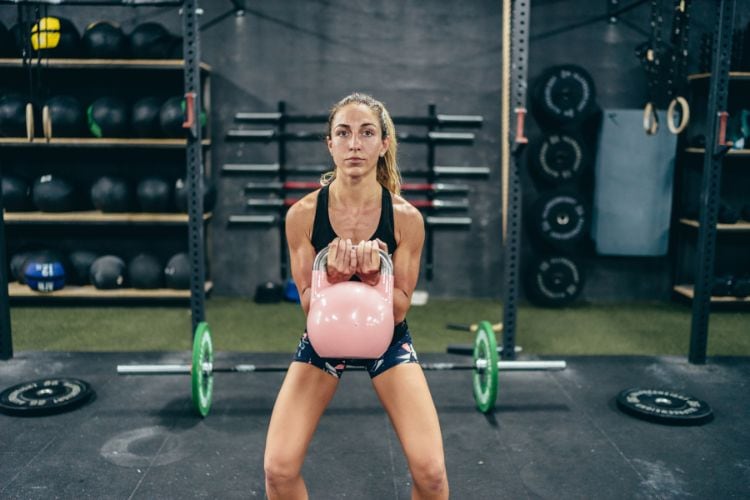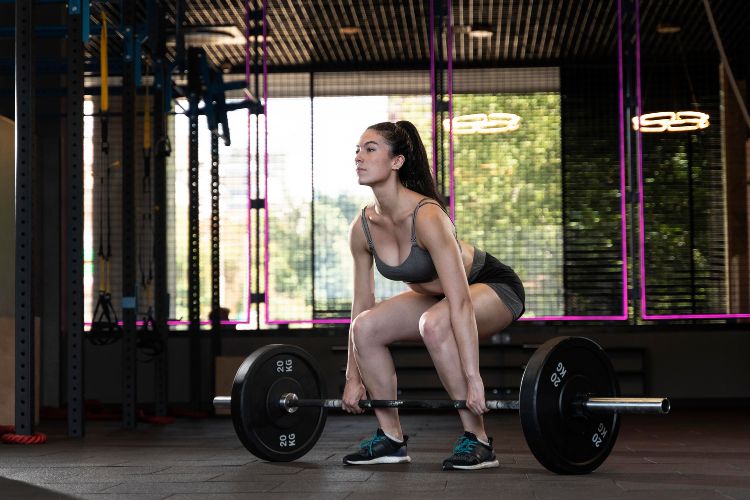Sign up for workout ideas, training advice, reviews of the latest gear and more.




Daily exercises are an essential aspect of a healthy lifestyle, particularly for women who often juggle multiple roles and responsibilities. Regular physical activity not only helps in maintaining a healthy weight but also reduces the risk of chronic diseases, improves mental health, boosts energy levels, and enhances overall quality of life. This blog post will delve into various exercises that are particularly beneficial for women, providing practical tips to incorporate them into daily routines.
Cardiovascular exercises, also known as cardio, are crucial for heart health and weight management. They help in burning calories, reducing body fat, and strengthening the heart and lungs. For women, incorporating activities like brisk walking, jogging, cycling, or swimming into their daily routine can make a significant difference. A 30-minute brisk walk or a 20-minute jog can be easily integrated into daily life, for instance, by choosing to walk to nearby destinations instead of driving or taking a short cycling session in the morning.
Strength training is another vital component of a daily exercise routine, especially for women as they age. It helps in building muscle mass, improving bone density, and reducing the risk of osteoporosis. Women can start with light weights or resistance bands and gradually increase the intensity. Exercises such as squats, lunges, push-ups, and planks are effective and can be done at home without any specialized equipment. Incorporating two to three sessions of strength training per week can yield significant benefits.
As women age, maintaining flexibility and balance becomes increasingly important. Yoga and Pilates are excellent for enhancing flexibility, balance, and core strength. These exercises also help in reducing stress and improving mental well-being. A daily routine of 15-20 minutes of yoga or Pilates in the morning or evening can work wonders. Poses like the downward dog, warrior, and tree pose are particularly beneficial and suitable for beginners.
For those with a busy schedule, High-Intensity Interval Training (HIIT) offers an efficient way to exercise. HIIT involves short bursts of intense activity followed by brief periods of rest or lower-intensity exercise. This type of workout can be completed in as little as 15-20 minutes and is highly effective for burning fat and improving cardiovascular health. Simple exercises like jumping jacks, burpees, and mountain climbers can be incorporated into a HIIT routine.
Pelvic floor exercises are particularly important for women, especially after childbirth. These exercises help in strengthening the muscles of the pelvic floor, which support the uterus, bladder, and bowel. Kegel exercises, which involve contracting and relaxing the pelvic floor muscles, can be done anywhere and at any time, making them easy to fit into a daily routine.
For women who experience joint pain or have conditions like arthritis, low-impact exercises can be beneficial. Activities such as swimming, walking, or using an elliptical machine offer effective workouts without putting excessive stress on the joints. Incorporating these exercises into a daily routine can help in maintaining joint health and mobility.
It’s important for women to listen to their bodies and adapt their exercise routines according to their menstrual cycles. During the menstrual phase, gentle exercises like walking or yoga can be more comfortable. As energy levels rise in the follicular phase, more intense workouts like cardio or strength training can be reintegrated. Understanding and working with one’s body’s natural rhythms can enhance the effectiveness of the exercise routine.
Exercise isn’t just about physical activity; it’s also about mental well-being. Incorporating mindfulness and relaxation techniques such as meditation or deep breathing exercises at the end of a workout can help in reducing stress and improving mental clarity. Even a short 5-minute session of guided meditation or deep breathing can have a positive impact.
Nutrition and hydration play a critical role in supporting an active lifestyle. A balanced diet rich in fruits, vegetables, lean proteins, and whole grains provides the necessary fuel for exercise. Staying hydrated, particularly during and after workouts, is also essential for optimal performance and recovery.
Lastly, consistency and patience are key to any successful exercise routine. Starting with manageable goals and gradually increasing the intensity and duration of workouts can help in building a sustainable exercise habit. It’s also important to be patient and kind to oneself, recognizing that progress takes time and that every step towards a healthier lifestyle is an achievement in itself.
Daily exercises for women encompass a range of activities tailored to different needs and goals. From cardiovascular exercises for heart health to strength training for muscle and bone density, and from flexibility exercises for balance to mindfulness practices for mental well-being, there is something for every woman looking to enhance her health and fitness. Here are additional insights and practical tips to further enrich this journey.
Combining aerobic (like jogging or swimming) with anaerobic exercises (like weight lifting or sprinting) offers a holistic approach to fitness. Aerobic exercises improve cardiovascular health and endurance, while anaerobic exercises build muscle strength and speed. This combination ensures a well-rounded fitness regimen, enhancing both endurance and strength. For instance, one can alternate days between a 30-minute jog and a 20-minute weight lifting session, providing the body with different types of stress and recovery, which is beneficial for overall health.
Making exercises a part of daily life beyond designated workout times can significantly boost physical activity levels. This can include taking stairs instead of elevators, walking or biking for short trips, or even doing light exercises like calf raises while standing in a queue. These small changes can add up, contributing significantly to overall fitness and calorie expenditure.
Technology can be a powerful ally in maintaining a fitness routine. There are numerous apps and devices that track physical activity, heart rate, calories burned, and even sleep patterns. Using these tools can provide insights into one’s progress and motivate by setting and achieving goals. For instance, a step counter can encourage more walking, while a workout app can offer guided exercises for different fitness levels and preferences.
Joining group fitness classes can be a great way to stay motivated and enjoy social interaction. Classes like aerobics, Zumba, spinning, or yoga offer the dual benefits of a structured workout and the motivation that comes from being part of a group. Many women find that the commitment to a class helps them stick to their exercise routine more consistently.
Rest days are an essential part of any daily exercises regimen. They allow the body to recover and muscles to repair and grow. Over-exercising without adequate rest can lead to fatigue, injury, and burnout. Incorporating rest days, or at least days with lighter activity like gentle yoga or a leisurely walk, is vital for long-term fitness and health.
Listening to one’s body is crucial when exercising. If an exercise feels painful or overly strenuous, it’s important to pause and reassess. Pain or discomfort can be a sign of injury or overexertion. Adapting exercises to one’s current fitness level and gradually increasing intensity can help prevent injury and ensure a more enjoyable and sustainable exercise habit.
For those new to exercising or with specific health conditions, seeking professional guidance can be very helpful. A certified fitness trainer or a physiotherapist can design a personalized exercise plan that is safe and effective. They can also provide valuable insights on proper technique, which is crucial for preventing injuries.
Variety in daily exercises not only prevents boredom but also challenges different muscle groups and improves overall fitness. Alternating between different types of exercises, such as cardio, strength training, flexibility workouts, and balance exercises, can keep the routine interesting and comprehensive. For instance, a week could include a mix of jogging, yoga, swimming, and a dance class, each offering unique benefits and keeping the routine exciting.
Setting realistic and achievable goals is a key part of a successful exercise routine. Goals can range from improving endurance, losing weight, to mastering a new exercise or yoga pose. Celebrating these achievements, no matter how small, can provide a sense of accomplishment and motivate to set and reach new goals.
Finally, having a supportive environment can significantly impact the success of an exercise routine. This includes family and friends who encourage and maybe even join in the exercise routine, creating a mutually motivating atmosphere. Sharing goals and achievements with a support group, whether in person or online, can also provide encouragement and accountability.
In sum, daily exercises for women should be diverse, adaptable, and enjoyable. From integrating physical activity into daily life to using technology for tracking, from participating in group classes for motivation to listening to the body and allowing for adequate rest, each aspect plays a crucial role in fostering a healthy, active lifestyle. With the right approach, regular exercise can be a rewarding and integral part of every woman’s life.
Stay up to date on the latest women’s health, fitness and lifestyle trends and tips.